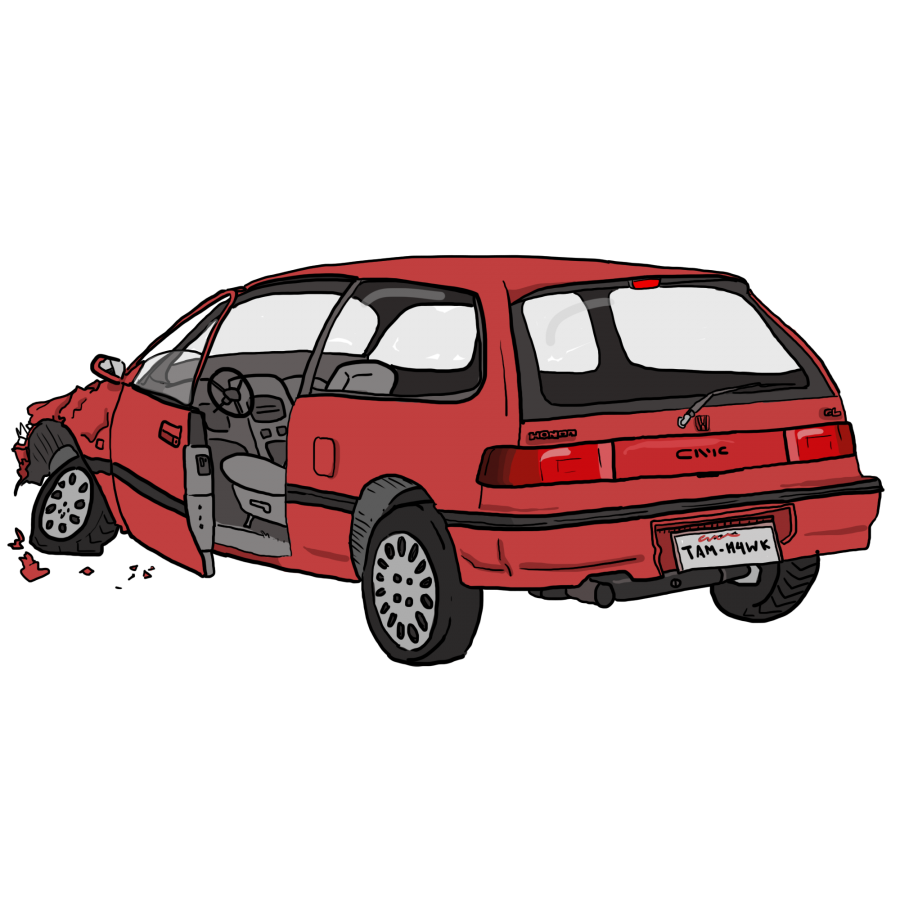As I rode by Tam in the passenger seat of my friend Connor Wynne Parrys ‘91 Honda Civic, I saw two headlights swerve into my lane. A moment later, as my friend and I crawled out of the smoking, crushed tin can of a car, we realized that our seat belts had just saved our lives. I locked eyes with the person who had just hit us and recognized him immediately. He was a classmate, probably drunk, making his way home after a night of partying. This was a drive that he had done hundreds of times, often inebriated, without incident, without doubting himself, and without his friends holding him back. But on this night he had crossed the line, literally.
Drunk driving in the Tam community is something that somehow slips its way into the party scene without much controversy. It’s a big choice, where someone can easily allow the safety of their life and their friends’ lives to take a back seat just to keep the party going. This is how I viewed drunk driving for a long time. As an underclassmen, I watched the popular seniors do it without injury or consequence. My perspective changed when I found myself in a hospital bed, unable to walk, and overheard the doctors telling Connor that he would need surgery on his lacerated kidney. At that moment, I swore to myself that I would never drink and drive.
After the accident, many of my friends posted pictures on Instagrams and Facebooks of me in the hospital and Connor’s destroyed car, commenting about how our accident made them feel sad, scared, anxious, and guilty. My fellow Tam students wanted their families and friends to know that they, too, felt the impact of the accident, and were also swearing off drunk driving.
A few weeks later, I was at a party and the night was coming to an end. An inebriated friend of mine started to say goodbye to everyone, but brushed by me without saying anything—being conspicuously inconspicuous. There was an ominous feeling in the room as he left to drive home, everyone knowing what he was about to do was wrong, and that he was avoiding me as if I was the voice of reason he didn’t want to hear. Though I don’t want people to feel uncomfortable around me, I have had trouble at each party when someone inevitably brushes by me with the same averted gaze.
It was a year ago, on May 27, that my fellow students and I held a rally chronicling the night of my accident. In close collaboration with former principal Julie Synyard and several teachers, we presented our perspectives to a packed gymnasium. As a result, we scared a lot of people in that room, but we also changed a lot of minds about the seriousness of drunk driving. After the rally was over, you could feel the change in the air. Students and teachers were crying. I was crying. Hundreds of my fellow classmates signed a pledge to stop drunk driving.
As time has passed since the accident and the rally, I have noticed that the impact on Tam students may have just been a temporary one. I have started to see kids who are very close friends of mine slip back into the mindset that it is okay to drive under the influence. Also, as the physical scars on my body and pain from the accident have faded away, I care less about the dangers that my friends are putting themselves in. While I wouldn’t drive drunk myself, I’m no longer the kid that others avoid on the way to their cars. I’m scared that we as teenagers are so short sighted that it will take another tragedy to rein us in again.


